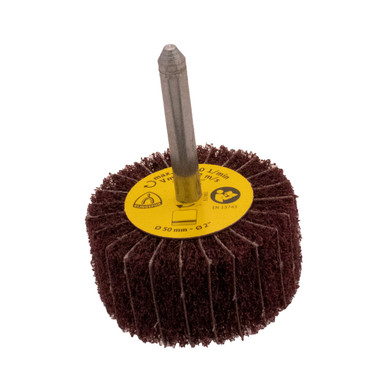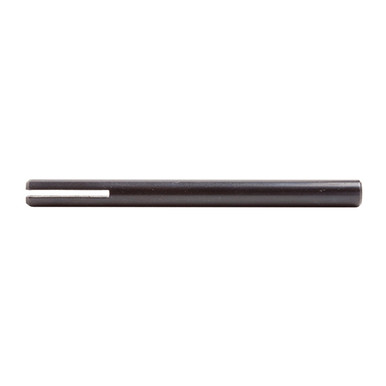I want a device for power sanding the inside of tall narrow necks and tubes. Does anyone make a long split-end mandrel that will hold a flolded flag of sandpaper or do I need to have one custom made by a machine shop?
-
May 2025 Turning Challenge: Long Neck Hollowform! (click here for details) -
Congratulations to Phil Hamel winner of the April 2025 Turning Challenge (click here for details) -
Congratulations to Paul Hedman and Donna Banfield for "Fire and Ice" being selected as Turning of the Week for 5 May, 2025 (click here for details) -
Welcome new registering member. Your username must be your real First and Last name (for example: John Doe). "Screen names" and "handles" are not allowed and your registration will be deleted if you don't use your real name. Also, do not use all caps nor all lower case.
You are using an out of date browser. It may not display this or other websites correctly.
You should upgrade or use an alternative browser.
You should upgrade or use an alternative browser.
split mandrel
- Thread starter Kevin Jenness
- Start date
- Joined
- Feb 28, 2021
- Messages
- 1,596
- Likes
- 1,395
- Location
- Roulette, PA
- Website
- www.reallyruralwoodworks.com
Couldnt you just cut a kerf in a stick of dowel and slot the sandpaper in the kerf? kinda gives you more options for dimensions I would imagine than any single purpose built tool.
For non power sanding I use a piece of dowel with a slot cut in the end, and some psa backed thin foam stuck on between the slots.
For power sanding, a piece of AL or brass rod would work. Cut a slot down one end. The other end can be cut down to fit the drill chuck on using your wood lathe with hss tools.
For power sanding, a piece of AL or brass rod would work. Cut a slot down one end. The other end can be cut down to fit the drill chuck on using your wood lathe with hss tools.
- Joined
- Jan 27, 2005
- Messages
- 13,107
- Likes
- 5,584
- Location
- Dalworthington Gardens, TX
- Website
- pbase.com
A Hunter carbide cutter could clean up the inside of the neck quicker and easier than sanding.
What are the dimensions of "tall and narrow"? I've always made them myself from wood dowels. If you wanted steel, that's an easy task for a machine shop to saw up a bar.
Brian, after a certain length wood gets too whippy, plus I want a female thead in the end to run it on my Milwaukee sander/polisher.
Doug, that's a great idea. Should have thought of it myself. On to McMaster Carr.
Richard, I am thinking on the order of 12" long with a 5/8" bar. If I don't make one out of brass rod I will have a machinist make me up a steel one. A club member has a tapered steel mandrel that is at least 12" long, threaded for attachment to a die grinder on one end and sanding and buffing pads on the other. I want something that I can use to sand the sides of tall forms that I can't reach with a regular sanding pad. I use a forceps for sanding near the neck and a standard mandrel extension for deeper work but they have their limits.
Doug, that's a great idea. Should have thought of it myself. On to McMaster Carr.
Richard, I am thinking on the order of 12" long with a 5/8" bar. If I don't make one out of brass rod I will have a machinist make me up a steel one. A club member has a tapered steel mandrel that is at least 12" long, threaded for attachment to a die grinder on one end and sanding and buffing pads on the other. I want something that I can use to sand the sides of tall forms that I can't reach with a regular sanding pad. I use a forceps for sanding near the neck and a standard mandrel extension for deeper work but they have their limits.
Tom Gall
TOTW Team
@Kevin Jenness - you didn't really answer Richard's question fully. An important factor is the size of the opening. Here are some options from the Klingspor Sanding Catalog that come in different diameters, widths, and grits. Here are a few that might work ... look around the catalog for other mops, etc..

 www.woodworkingshop.com
www.woodworkingshop.com
 www.woodworkingshop.com
www.woodworkingshop.com

 www.woodworkingshop.com
www.woodworkingshop.com

Finishing Flapwheels 2"
Klingspor's Woodworking Shop is full line distributor of woodworking tools and supplies from respected companies like Klingspor Abrasives.
Search

Slotted Mandrels
Klingspor's Woodworking Shop is full line distributor of woodworking tools and supplies from respected companies like Klingspor Abrasives.
I have used a dowel that I cut a slot in with a hacksaw, just for sanding narrow openings that got drilled and are not smooth, just slip the sandpaper in the slot and spin the dowel held in a drill.
If it was for a long opening I would probably do just the first part that you could feel and leave the rest
If it was for a long opening I would probably do just the first part that you could feel and leave the rest
@Kevin Jenness - you didn't really answer Richard's question fully. An important factor is the size of the opening. Here are some options from the Klingspor Sanding Catalog that come in different diameters, widths, and grits. Here are a few that might work ... look around the catalog for other mops, etc..

Finishing Flapwheels 2"
Klingspor's Woodworking Shop is full line distributor of woodworking tools and supplies from respected companies like Klingspor Abrasives.www.woodworkingshop.com
Search
www.woodworkingshop.com

Slotted Mandrels
Klingspor's Woodworking Shop is full line distributor of woodworking tools and supplies from respected companies like Klingspor Abrasives.www.woodworkingshop.com
Tom, thanks for the links. I do have some flap wheels, but their longevity/price ratio is a bit low. The slotted mandrel shown is a good deal and similar to what I have in mind. I would like something a bit longer that will thread onto my 2800 rpm sander arbor, and I suspect I will have to go the custom route for that.@Kevin Jenness - you didn't really answer Richard's question fully. An important factor is the size of the opening. Here are some options from the Klingspor Sanding Catalog that come in different diameters, widths, and grits. Here are a few that might work ... look around the catalog for other mops, etc..

Finishing Flapwheels 2"
Klingspor's Woodworking Shop is full line distributor of woodworking tools and supplies from respected companies like Klingspor Abrasives.www.woodworkingshop.com
Search
www.woodworkingshop.com

Slotted Mandrels
Klingspor's Woodworking Shop is full line distributor of woodworking tools and supplies from respected companies like Klingspor Abrasives.www.woodworkingshop.com
My Milwaukee angle drill w/ key chuck spins up to only 1400 rpm I believe. Perhaps I will use that with the Klingspor mandrel for now, with an extension where necessary.
Last edited:
12" is really going to put some load on the bearings in a die grinder. In my opinion, a die grinder spins way to fast for sanding, and especially to fast for a 12" cantilevered rod sticking out!
Yes, I tend to agree. On the other hand, I'm acquainted with two professional turners whose work is immaculate who do use high speed pneumatic die grinders on the regular for sanding bowls and hollow forms, one of whom uses the tapered mandrel I mentioned. I imagine they look on the cost of replacing bearings or grinders periodically as the cost of doing business. As well, they turn cleanly enough that their sanding is mostly limited to removing tool marks and refining scratch patterns. If I do have a mandrel made I wouldn't run more than 2800 rpm.12" is really going to put some load on the bearings in a die grinder. In my opinion, a die grinder spins way to fast for sanding, and especially to fast for a 12" cantilevered rod sticking out!
